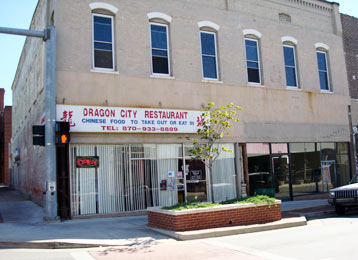


The city's relation to the British crown made it a great place for material prospects and opportunity, which drew businessmen and immigrant workers from surrounding areas. Calcutta was the capital of British-ruled India when it was governed by the East India Trading Company (from 1757 to 1858). The most popularized theory for the origins of Chinese Indian food was during the British Rule of India deep within Calcutta. Tiretti Bazaar in Kolkata, India's only Chinatown (2013). Origins Chinese New Year celebration in Kolkata (2014). This idea of flavourful, saucy Chinese food cooked with Indian spices and vegetables has become integral to the mainstream culinary scenes of India, Pakistan, Bangladesh, and Afghanistan, and its diffusion to nations like the United States, the United Kingdom, Canada, and the Caribbean has shaped and altered the global view of Chinese, Indian, and Asian cuisines. Stir-fried in a wok, Sino-Indian food takes Chinese culinary styles and adds spices and flavours familiar to the Indian palate. Ĭhinese Indian food is generally characterised by its ingredients: Indian vegetables and spices are used, along with a heavy amount of pungent Chinese sauces, thickening agents, and oil. Opening restaurant businesses in the area, these early Chinese food sellers adapted their culinary styles to suit Indian tastes. Though Asian cuisines have mixed throughout history throughout Asia, the most popular origin story of the fusion food resides with Chinese labourers of Calcutta (now called Kolkata), who immigrated to British Raj India looking for work. Indian Chinese cuisine, Chinese Indian cuisine, Sino-Indian cuisine, Chindian cuisine, Hakka Chinese or Desi-Chinese cuisine is a distinct style of Chinese cuisine adapted to Indian tastes, combining Chinese foods with Indian flavours and spices.

Shanghai fried noodles with oily, saucy flavors


 0 kommentar(er)
0 kommentar(er)
